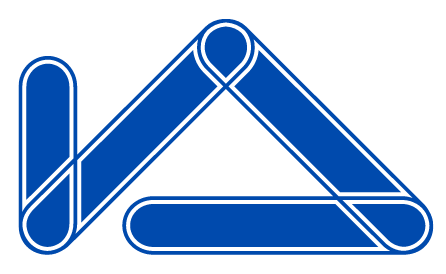Roof Maintenance Essentials Every Homeowner Should Know
 Your roof is more than just a protective covering—it's a vital component of your home's structure and safety. Neglecting roof maintenance can lead to costly repairs or early replacement, but with a proactive approach, you can keep your roof in excellent condition for years.
Your roof is more than just a protective covering—it's a vital component of your home's structure and safety. Neglecting roof maintenance can lead to costly repairs or early replacement, but with a proactive approach, you can keep your roof in excellent condition for years.
This guide walks you through essential roof maintenance practices, from inspections to preventative care, ensuring your roof stays strong and functional.
Start with Regular Inspections
Routine roof inspections are critical for catching issues early before they escalate into larger problems. During inspections, focus on:
- Shingles: Look for missing, curled, or cracked shingles.
- Flashing: Check for rust, cracks, or gaps around roof penetrations.
- Water Damage: Look for water stains or sagging areas on the roof deck.
Hiring a professional once a year can help identify hidden damage that isn't visible from the ground, such as issues with the underlayment or structural supports.
Pro Tip: Inspect your roof after severe weather events like storms, high winds, or heavy snowfall to catch storm-related damage early.
Clean Your Gutters
Gutters play a crucial role in directing water away from your roof and foundation. If clogged, water can pool on the roof, leading to leaks and long-term damage.
Why Gutter Maintenance Matters
- Prevents Water Damage: Ensures water flows away from your home.
- Reduces Ice Dam Risk: Keeps gutters clear to prevent ice buildup in winter.
- Avoids Structural Problems: Protects the fascia, soffits, and foundation from water overflow.
Pro Tip: Clean your gutters at least twice a year, in the spring and fall, or install gutter guards for less frequent maintenance.
Trim Nearby Trees
Overhanging branches pose multiple risks to your roof, including physical damage and debris buildup. Address this by trimming back branches that are close to your home.
Risks from Overhanging Trees
- Branch Impact: During storms, branches can fall and damage shingles or puncture the roof.
- Debris Accumulation: Leaves and twigs can trap moisture, leading to rot and algae growth.
- Pest Access: Tree limbs can provide a pathway for animals to access your roof or attic.
Pro Tip: Maintain a minimum clearance of 10 feet between your roof and nearby tree branches.
Remove Debris from the Roof
Debris such as leaves, sticks, and dirt can accumulate on your roof, creating moisture pockets that degrade shingles and encourage moss or algae growth.
How to Safely Clean Your Roof
- Use a soft-bristle broom or leaf blower to gently clear debris.
- Avoid using pressure washers, which can strip granules from shingles.
- Check valleys and other areas where debris tends to collect.
Pro Tip: Consider adding a moss-resistant treatment to your roof if you live in a damp or shaded area.
Address Minor Repairs Promptly
Ignoring small issues like a single loose shingle or a cracked flashing can lead to major problems down the road.
Common Minor Repairs
- Replacing Shingles: Swap out damaged or missing shingles to prevent water infiltration.
- Sealing Cracks in Flashing: Use roofing cement to repair gaps and keep moisture out.
- Fixing Nail Pops: Re-secure exposed nails that can weaken the roof's waterproofing.
Pro Tip: Perform spot-check repairs immediately after inspections to minimize risks.
Ensure Proper Ventilation and Insulation
Your attic's ventilation and insulation systems are closely tied to your roof's performance. Poor airflow or insulation can lead to premature aging and structural issues.
Why Ventilation and Insulation Matter
- Prevents Heat Damage: Proper ventilation reduces heat buildup, which can cause shingles to warp.
- Avoids Condensation Issues: Reduces moisture buildup that leads to rot or mold.
- Improves Energy Efficiency: Helps maintain consistent indoor temperatures.
Pro Tip: Check for consistent airflow in your attic and ensure insulation is free of gaps or damage.
Protect Against Moss and Algae
Moss and algae not only mar your roof's appearance but also shorten its lifespan by trapping moisture.
Preventative Measures
- Install zinc or copper strips near the roof's ridge to naturally deter moss.
- Use a gentle roof cleaner to remove existing growth without damaging shingles.
- Maintain good sunlight exposure by trimming trees and clearing debris.
Pro Tip: Schedule a professional roof cleaning service every few years if moss and algae are persistent issues.
Monitor Flashing and Seals
Flashing and seals are often the first areas to fail on a roof. Regularly inspecting and maintaining them is key to preventing leaks.
Areas to Check
- Chimneys: Ensure flashing is securely fastened and free of rust.
- Skylights: Reapply sealant if the edges show signs of cracking.
- Roof Vents: Check that all seals are intact and not pulling away from the surface.
Pro Tip: Apply high-quality roofing caulk to reseal flashing and prevent water penetration.
Take Winter Precautions
Winter weather poses unique challenges for roofs, from heavy snow loads to ice dams.
Winter Maintenance Tips
- Use a roof rake to safely remove snow and reduce weight on the roof.
- Keep gutters clean to allow melted snow to drain properly.
- Insulate your attic to prevent warm air from melting snow and causing ice dams.
Pro Tip: Avoid breaking up ice dams with sharp tools, as this can damage your roof. Use ice-melting products instead.
Invest in Preventative Maintenance
A professional preventative maintenance program helps address wear and tear before it becomes serious. Roofing contractors can:
- Perform detailed inspections
- Repair vulnerable areas
- Apply protective coatings for added durability
Pro Tip: Ask your contractor about maintenance plans that include annual inspections and minor repairs as part of a package.
Keep an Eye on Interior Signs
Sometimes, roof problems aren't visible from the outside. Check your home's interior for:
- Water stains on ceilings and walls
- Peeling paint or wallpaper
- Mold or mildew growth in the attic
Pro Tip: Interior warning signs often indicate that roof damage has progressed—don't delay professional help if you spot them.
Conclusion
Caring for your roof doesn't have to be complicated. By following these essential maintenance practices, you can extend the life of your roof, avoid costly repairs, and protect your home.
For the best results, partner with a professional roofing contractor to handle inspections, repairs, and preventative measures. A well-maintained roof is a long-lasting roof, giving you peace of mind for years to come.
